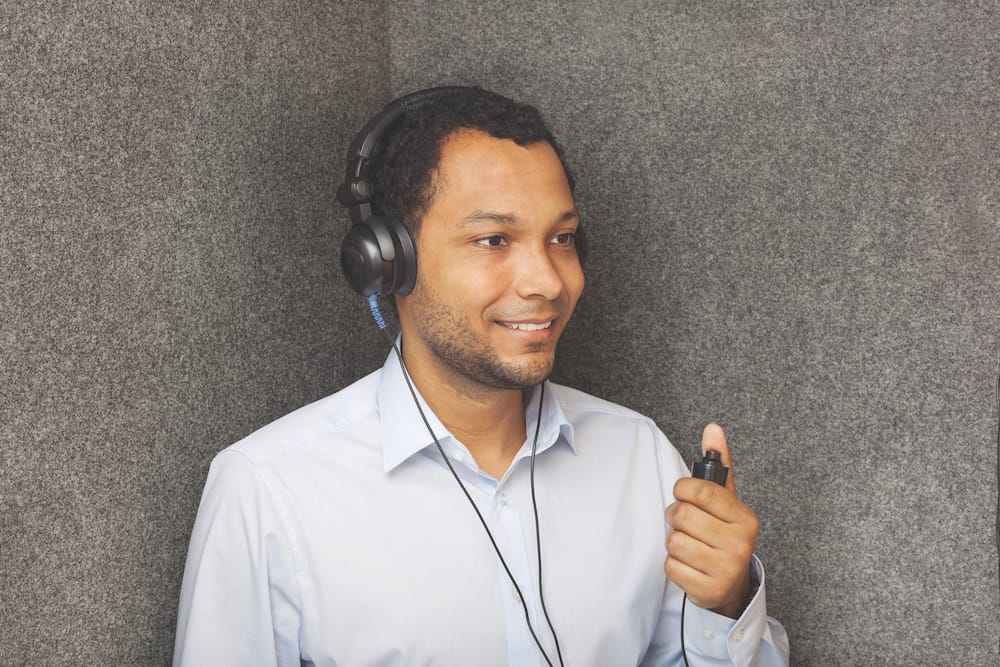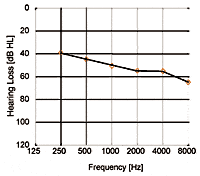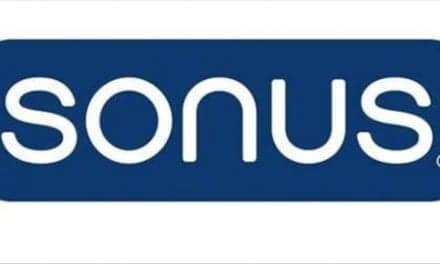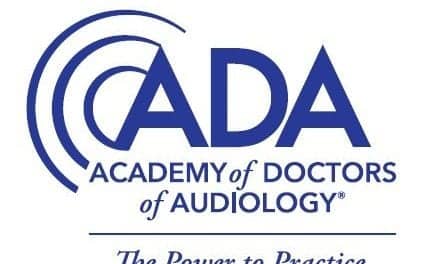For patients to get the most out of hearing screenings, the service should be part of a comprehensive audiometric evaluation that helps to ensure they receive accurate diagnoses and appropriate follow-up care.
By Andy Lundin
Hearing care professionals (HCPs) feel a duty to make sure they provide an appropriate level of hearing care services to the patients they see, depending on their needs. Is just doing a hearing screening really enough?
A person who is evaluated by a hearing screening alone, for example, may make an assumption about the status of their hearing health just based on that procedure and end their hearing health journey there. However, audiologists and other hearing care professionals know the most effective way to totally understand a person’s hearing health status is through a comprehensive audiometric evaluation.
“Hearing screenings are only sensitive to hearing loss up to a certain point,” says Steve Aiken, PhD, associate professor, School of Communication Sciences and Disorders Departments of Surgery and Psychology & Neuroscience, Dalhousie University. “Certain hearing challenges can be very subtle, so you’ll need to perform a full diagnostic exam to know what someone is experiencing.”
Indeed, HCPs can only glean so much about a person’s hearing health based on the results of a general hearing screening alone, but there are ways that hearing screenings can be utilized more effectively to help develop a truly holistic hearing care experience for patients.
Limitations of Traditional Hearing Screenings
One sticking point among experts in the broader hearing care space is the practicality of performing general hearing screenings in a professional hearing care setting.
For example, while pure-tone screenings—which are the most common screening for older children and adults1—can play a useful role in letting people know that they have a hearing loss, they aren’t comprehensive enough to pick up on all hearing difficulties.
“You need quite a bit of auditory damage before it will change your results on that pure-tone test, especially at the frequencies we test in screening,” he says, since approximately 80% of the sensory cells, synapses, or auditory nerve fibers need to be lost in a particular frequency range before hearing care professionals see any shift in hearing thresholds.
Douglas L. Beck, AuD, F-AAA, CCC-A, consultant, host of The Hearing Matters Podcast, and adjunct professor of communication disorders at the State University of New York at Buffalo, is more critical of the value of a hearing screening alone, regardless of whether one passes or fails the screening.
“If I find you fail the screening, I need to do a comprehensive audiometric evaluation,” Beck says. “If you pass the screening, I don’t have enough information to really say anything about your hearing health. Why are we wasting everybody’s time with screenings?”
However, there are situations where a hearing screening can be a good starting point, and better than nothing at all. For example, Beck believes there can be value in hearing screenings conducted outside of the professional hearing care setting.
“I don’t have issues with school nurses or health aides doing hearing screenings. They’re trying to help to see if someone could grossly have a problem or not. But when a professional does it, it’s a big mistake,” he opines.
A Path to Comprehensive Audiometric Evaluation
However, many hearing care professionals lament the lack of referrals they receive from general hearing screenings conducted outside the hearing healthcare space—e.g. in a family doctor or primary care physician setting—for further comprehensive audiometric evaluation.
They cite a general lack of education on the part of primary care physicians about the importance of suggesting patients receive more comprehensive audiometric evaluations as a key reason.
“If the physicians better understood the importance of hearing health, there would be more referrals for hearing tests, and the screenings would start to become more of a natural practice in the physician’s office,” says Ann Mundell-Noel, an audiologist at Amazing Hearing/Ultimate Ears, based in Laguna Hills, Calif. “Patients might not know where to go or what to do after they are screened, so the education of the physician should be an important part of the actual screening itself.”
Aiken echoes Mundell-Noel’s sentiments about inherent problems rooted in the reasons why there is a lack of referrals for additional audiometric evaluation, and concern that this is the norm.
“The message people tend to get from primary care physicians about their hearing health is, ‘Don’t worry about it.’ Not always, but that’s often the message,” he says. “There’s lots of negative consequences of hearing loss. So we try to push back against that way of thinking. It isn’t a medical emergency to have a hearing loss as you get older, but there is a lot of evidence that it’ll decrease your quality of life and lead to other potential issues.”
Aiken cites physical (e.g. increase in fall risk) and mental (e.g. dealings with social isolation) as just a few of the negative consequences of developing hearing loss when he talks with physicians and patients about why hearing evaluations are important.
As director of auditory research at the Musicians’ Clinics of Canada, Marshall Chasin, AuD, focuses on links between hearing and patients’ professions in his line of work. But he recognizes that this is unfortunately not the case for most general practitioners. The adjunct professor at the University of Toronto and adjunct associate professor at Western University believes a physician who is not only better educated about the importance of hearing health but also their clients’ lifestyles will be able to provide them with much more effective pathways to hearing care.
“I suggest that we should be advocating to family physicians who have any patients who work in noisy spaces, such as if they’re musicians or they work in a factory, that they should routinely have referrals to an audiologist,” Chasin says. “So, a lot of it comes back to the audiologist doing the full assessment, not a screening.”

Pure-tone screenings can play a useful role in letting people know that they have a hearing loss, but aren’t comprehensive enough to pick up on all hearing difficulties. Photo: Dreamstime
Make Impactful Hearing Care Referrals
To provide all patients with the best hearing care possible, Marshall Chasin, AuD, director of auditory research at the Musicians’ Clinics of Canada, stresses the importance of striking the right balance of patient referrals based on screening results in any healthcare setting due to complications that could arise later.
He emphasizes that all healthcare professionals, including audiologists and other HCPs, should be more aware of the significance in understanding the certain contexts surrounding the screenings (e.g. if you’re currently in a flu season) when making decisions based on the state of a person’s health.
Chasin’s philosophy is that “there has to be a happy medium between over-referring and under-referring” based on the results.
As far as he is concerned, the three essential elements for deciding pass-fail criteria—which could alter the trajectory of a person’s hearing care journey—during a hearing screening include:
1. The theory of signal detection, which considers sensitivity and specificity. “You want the test to catch as many problems as you can, but at the same time not give you a false positive where a person failed this screening but essentially had no problems,” says Chasin. “It’s always that balance between the two.”
2. Are a patient’s symptoms clinically valid? A person might have a bit of hearing loss that is the result of them contracting a cold during the wintertime when a lot of people have a cold, Chasin says as an example. As such, this could lead to situations where many patients are referred for hearing care they don’t need. “For example, if all children were referred to an ENT if middle ear pressures were worse than -200, in some communities this would only have the effect of increasing the ENT’s waiting list from 3 weeks to 3 months, which helps nobody,” he says.
3. Availability of follow-up services in the community. Consider point No. 2 here: In rural areas with sparse populations and limited medical resources, less thoughtful considerations for the pass-fail criteria could impact hearing health services in the community. For example, if this were an instance involving a small town where there was only one hearing care professional available, that one HCP would be overwhelmed with too many referrals.
Making Screening Part of a Complete Package
Indeed, the HCPs interviewed for this article agree that the best way to gain real value in hearing screenings is when they function as a gateway to a comprehensive audiometric evaluation.
Mundell-Noel employs comprehensive audiometric evaluation at her clinic, but any hearing screening that she conducts when outside of her clinic is multi-layered and ultimately designed to create an effective path to a comprehensive evaluation.
This screening program consists of:
- An otoscopic exam, where she checks for a healthy ear drum, and observes if it is visible and intact
- Asking COAT (Characteristics of Amplification Tool) questions
- Presenting “beeps” at four frequencies via pure-tone test
- Explaining the need for further testing for more accurate assessment
She finds the COAT questions—developed by the audiology section of the Cleveland Clinic—especially important because they best help her identify if someone is already experiencing symptoms of hearing loss.
Some of the COAT questions Mundell-Noel asks include:2,3
- Please list the top three situations where you would most like to hear better.
- How important is it for you to hear better?
- How motivated are you to wear and use hearing aids?
- How well do you think hearing aids will improve your hearing?
For his part, Aiken feels one of the most essential components of the hearing care screening process is informing patients on the importance of being invested in their hearing health and being communicative about their needs.
“That’s the critical thing. It’s figuring out how to communicate to people the importance of hearing and to engage them in it so they can have good hearing communication outcomes and a higher quality of life,” he says.
Beck says that following a comprehensive audiometric evaluation, he strives to communicate to his patients about any additional hearing care services they may need to explore, particularly if they end up needing to wear any hearing devices.
“A more complete diagnosis process is a much better thing because then we can more accurately counsel them,” says Beck. “It’s from here that we can talk about aural rehabilitation, or we can talk about the differences in hearing aids, or we can just program the hearing aids specifically for their needs.”
Ultimately, everything comes down to the decisions that patients make based on the hearing care situations that they find themselves in. The onus is on those who operate in any of these hearing care spaces to provide patients with the knowledge and tools to get the care they truly need.
Original citation for this article: Lundin A. Beyond Hearing Screening: The Importance of Holistic Hearing Care and Audiometric Analysis. Hearing Review. 2024;31(8):6-8.
Photo: Dreamstime
References:
- Hearing Screening. American Speech-Language-Hearing Association. https://www.asha.org/public/hearing/hearing-screening/#:~:text=A%20hearing%20 screening%20is%20a
- Characteristics of Amplification Tool (COAT). Accessed July 15, 2024. https://audiologydoctorsofflorida.com/wp-content/uploads/sites/63/2020/06/sandridge_COAT.pdf
- Characteristics of Amplification Tool (COAT). Accessed July 15, 2024. https://www.sacredheart.edu/media/shu-media/audiology-clinic/COAT-ADA.pdf






Dr Marshall Chasin steps brilliantly beyond tone-testing to advocate for individual lifestyle/workplace hearing needs. It’s thanks to him and, in my view, just one or two other professionals, that clinical interventions and manufacturing technology now at last venture beyond the clever speech-in-noise algorithm. We love to hear a world of sweet music, purring pets, nature…